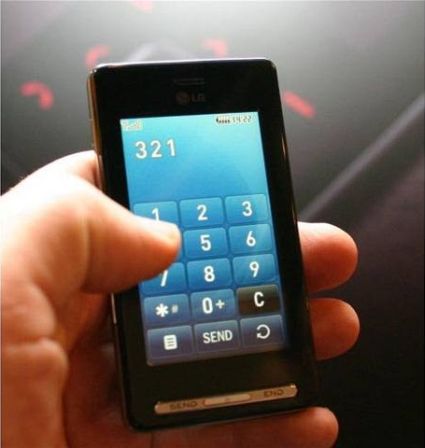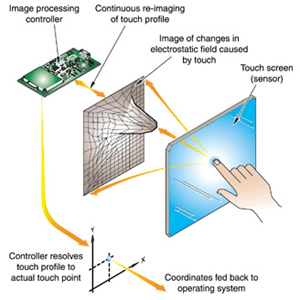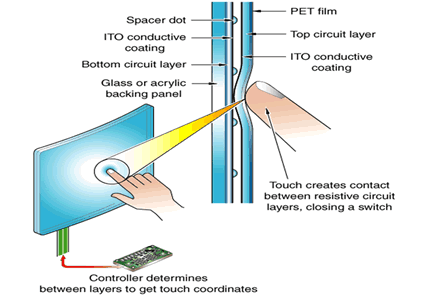What are Capacitive and Resistive Touch Screens?
Difference Between Capacitive and Resistive Touch Screens
This article will surely provide you with a piece of knowledge about the mobile screens. The trend of touch screen mobile is gaining its roots in Pakistan. People are now more attracted towards the touch screen phones. And mostly phones which are equipped with latest technology come with touch screen. So when you are using something then you should know something about it.
Types of touch screens
There are 2 types of touch screens.
- Capacitive touch screen
- Resistive touch screen
Capacitive Touch screen
Capacitive touch screen is made up to such a glass which can absorb charge. When the screen is touched then it senses that where the charge is disturbed and hence it can know the exact point where we touch our finger. And as soon as we touch our finger merely it judges the touch immediately and transfers this information to the touch screen driver software.
Samsung, apple, HTC and many other companies are manufacturing capacitive touch screen mobile phones.
Advantages
Here we will discuss some advantages of capacitive touch screens.
- The modern multi touch support is available which is also used in iPhones and some Samsung smart phones.
- Its visibility is very good even in sunlight.
- It senses the touch quiet efficiently which makes it easy to use.
- It is not prone to dust particles.
Disadvantages
- Capacitive touch screen is usually quiet expensive.
- It needs a minimum to 5% humidity in the atmosphere to operate.
- It doesn’t work with pointed or intimate objects like pen, nails or gloved fingers.
Resistive Touch screen
Resistive touch screen is made from ordinary glass. Basically it is made up of 3 layers. One layer is conductive, one is resistive and the third one is a scratch resistant layer which covers the whole system. Below the scratch resistant sheet there are conductive and resistive layers which are separated by spacers. Now we come to the point that how this system operates. When the mobile is powered on then current is flowing through these layers. When we touch the screen then these two current carrying layers join and change in electric field occurs. The exact point of contact is calculated and passed on to the touch screen driver.
Nokia is the main developer of phones with resistive touch screens. Almost all of the nokia touch screen phones are resistive.
Advantages
- It is a cheaper technology.
- It can be operated with a finger, a pen or with any other pointed device.
- It can doesn’t need any humidity to operate. It can operate at any level of humidity.
- In winters it can be easily used with gloves.
- It is more accurate than resistive touch screen.
Disadvantages
- Multi touch support is not available. Engineers are working on it but it is not 100% developed yet.
- The upper layer of its screen can more open to scratches because it needs to be pressed a bit.
- In sunlight the visibility gets very poor.


